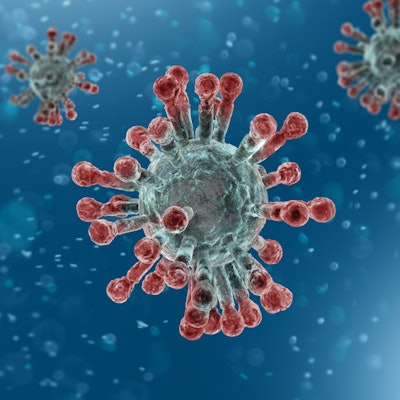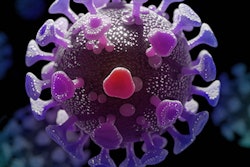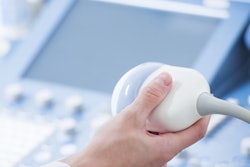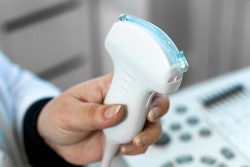
Chinese ultrasound experts advised disinfecting both surfaces and the room air within ultrasound departments to protect healthcare professionals during the novel coronavirus pandemic. The advice is among the first to address air sanitation, and it was published on October 12 in Ultrasound in Medicine and Biology.
Four medical organizations in China came together virtually earlier in the year to draft ideal safety guidelines for ultrasound practitioners in the country. Their guidance reflects evolving knowledge about the novel coronavirus, including potential airborne transmission.
"Since in the department of ultrasound the healthcare workers are close contacted with patients who might be infected or virus carrying, it is extremely important to offer protection to them," wrote the authors, led by Dr. Luo Yukun from the diagnostic ultrasound department at Chinese People's Liberation Army General Hospital in Beijing.
The experts broke the guidelines into two sections: (1) the creation of designated spaces and (2) personal protective equipment (PPE) recommendations. The organizations behind the recommendations based their guidance on existing hygiene standards, practitioner experience, and published literature.
The authors said their most important recommendation was to create distinct spaces for patients and healthcare professionals. This entails designing designated pathways and rooms for patients, two different buffer areas for workers to don and doff PPE, and spaces that only healthcare professionals can access.
"Among all the suggestions, the most important is to keep a clear idea about what is contaminated and what is not to minimize unnecessary exposure and to prevent the further spread of the disease," the authors wrote.
The guidelines are also one of the first to offer air sanitation recommendations, such as regularly disinfecting the air in areas that see both routine patients and patients with likely infections.
For areas that see routine patients, the authors recommended ventilating rooms for at least 30 minutes in the morning and night as well as using an ultraviolet (UV) lamp to sanitize the air at the end of the day. For spaces with patients with confirmed or suspected COVID-19 infections, facilities should instead use a hydrogen peroxide spray or UV lamp after each patient visit. Facilities can also consider placing a plasma air disinfection machine in rooms that see patients with likely infections.
The air sanitation recommendations come on top of guidance to routinely disinfect surfaces, including ultrasound machines and probes, keyboards, floors, and door handles. The authors also recommended using ultrasound probe covers and plastic machine covers when possible, especially for areas that see patients with likely infections.
As for PPE, all healthcare workers should don primary PPE, including work coats, disposable hairnets, latex gloves, and surgical masks, when working with any type of patient. This guidance applies not only to physicians operating ultrasound equipment but also to nurses, assistants, and front desk staff.
The authors further advised the use of secondary PPE, such as isolation gowns, for healthcare professionals working in areas with patients with likely infections. Meanwhile, the strictest, tertiary PPE, such as full-face respirators, should be saved for ultrasound-guided, aerosol-generating procedures.
Finally, the authors touted handheld ultrasound as a safer way to perform exams on patients with confirmed or suspected cases of COVID-19. Even though handheld ultrasound use is not popular in China, the authors pointed to its benefits for COVID-19 in other parts of the world, noting its usefulness not only in ultrasound wards but also in ob/gyn clinics, emergency departments, and even nursing homes.
"There might be still some points which need further evidence," the authors concluded. "However, we are still confident to conclude that under proper protection and management, lung ultrasound examinations can offer valuable information for diagnosis and treatment of COVID-19 in a minimized risk of infection."



















